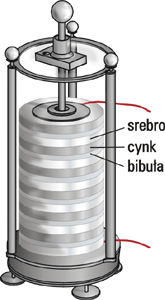- Tips
- technology
- Frequently Asked Questions
- Tests
- mAh capacity
- Rated Capacity
- comparison
- everActive
- Batteries vs rechargeable batteries
- Durability of rechargeable batteries
- Efficiency of rechargeable batteries
- battery voltage
- Accumulated energy
- LR03 AAA
- LR6 AA
- eneloop
- AG13 LR1154 LR44
- CR 2032
- Delta V
- Charge Cycles
- internal resistance
- charge level
- memory effect
- accredited test
- SR44 357
- Hearing Batteries 675
- SR626 377
- Watch Batteries
- Polarity
- Mah
- passivation
- LS 14250
- LS 14500
History of the battery
2019-06-19
The term "battery" was first used in 1748 by Benjamin Franklin to describe an electrically charged glass plate. Between 1780 and 1786, Luigi Galvani demonstrated what we understand today as the basis of knowledge about electricity and electrical impulses, which was the foundation of later research by inventors such as Volta. A little later, a professor of physics in Como, Italy, Alessandro Volta, who lived in the years 1745-1827, conducted experiments with electricity ...
He based his research on the achievements of his friend, Luigi Galvani, who observed that the leg muscles of a dead frog contract when touching two different metals... Galvani thought that this was the effect of "animal electricity" in the muscles, while Volta assumed that metals produce electricity (and the muscles only detect it), which led him to the correct explanation of the concept of an electric circuit. Dr. Galvani's experiments aroused the curiosity of his compatriot Alexander Volta, who consequently built a "pile". The original Volta stack is a vertical column of coins of two types (fig. 1), arranged alternately and separated (every other one) by paper moistened in salt water, up to a hundred such pairs. At an exhibition in Paris in 1800, Volta showed both a stack and a series of cells with two plates immersed in acid. Volta wrote, "In the case of two different metals, it is possible that one of them absorbs electrical fluid from a wet body and the other gives it away, thus causing a state of disequilibrium, i.e. the flow of current."

Copyright © Baltrade
Add a comment